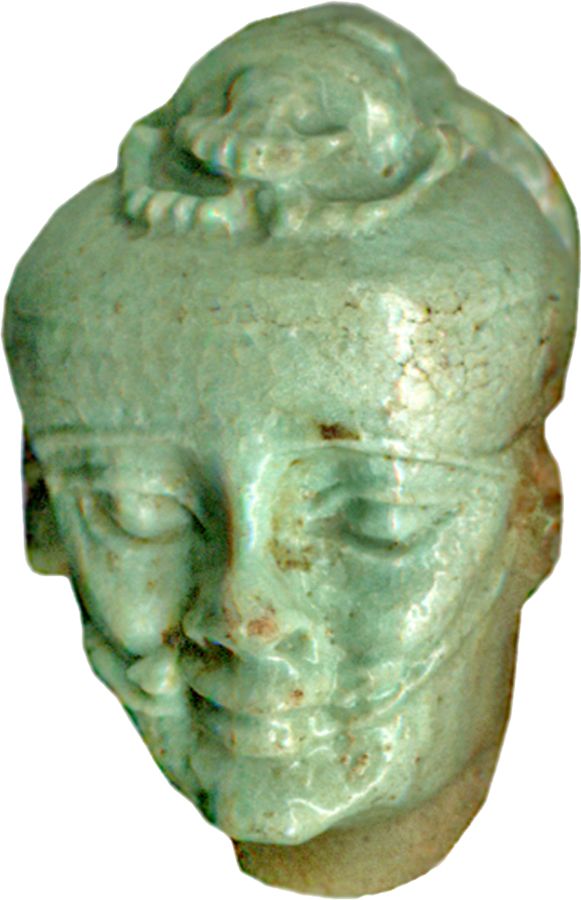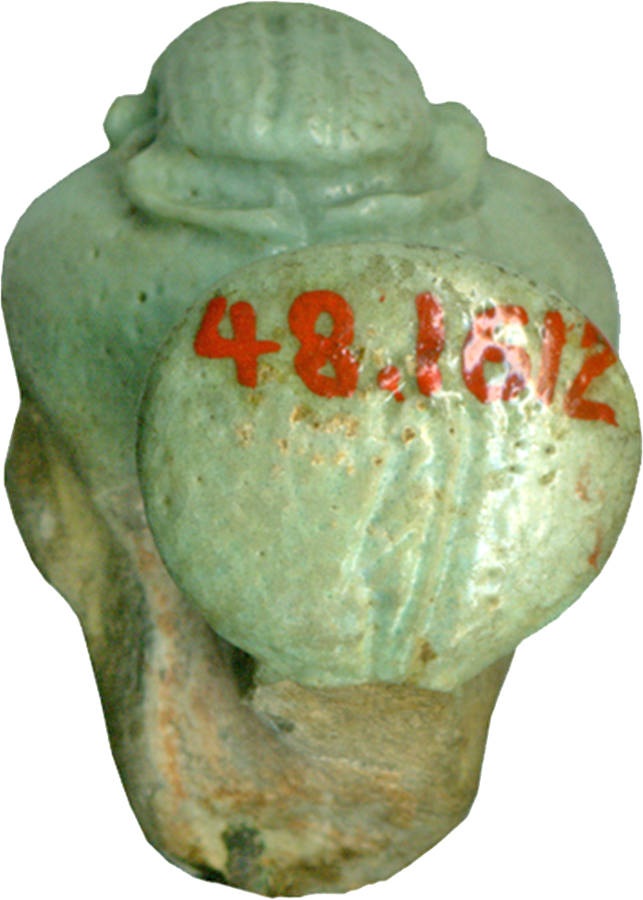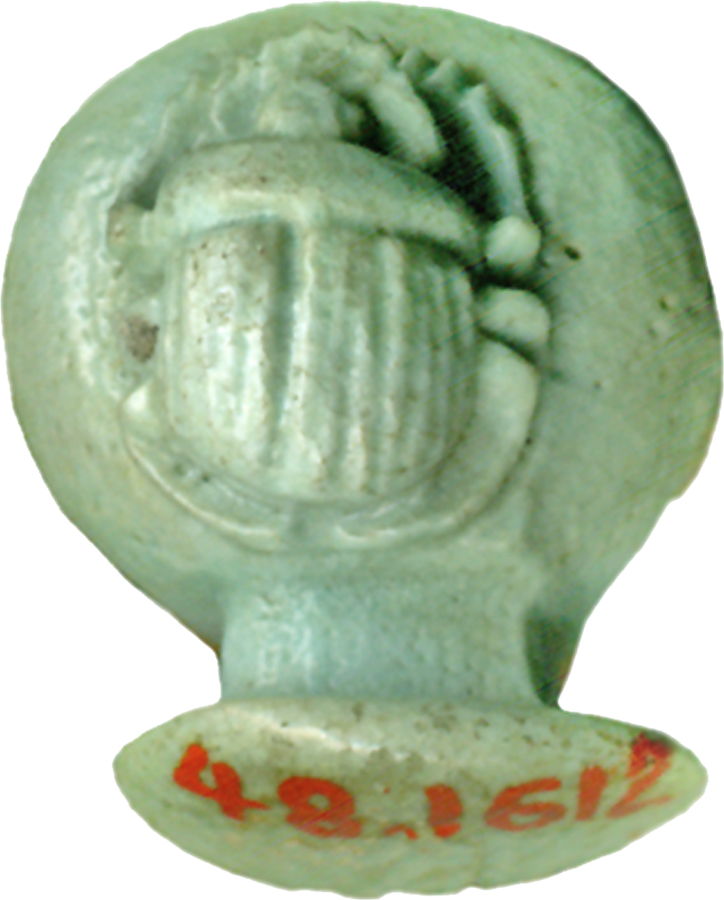Head of Pataikos with Scarab
(Ancient Egypt and Nubia )
This dwarf-like, protective deity was very popular in ancient Egypt; amulets in the shape of this god were particularly popular from the Third Intermediate period. The Greek name Pataikos comes from a passage in the writings of Herodotus (ca. 5th century BCE), who used this term to describe a Phoenician protective dwarf-like image. The Egyptian Pataikos is a special manifestation of the creator god Ptah and the dwarf-like appearance symbolizes his magical power.
This head belongs to an unusual variant of Pataikos, representing him with a snake in his mouth which winds its way up to his ears. The god has a scarab on his head. The fragment once belonged to a group of figures standing back to back.
Provenance
Provenance (from the French provenir, 'to come from/forth') is the chronology of the ownership, custody, or location of a historical object. Learn more about provenance at the Walters.
Henry Walters, Baltimore [date and mode of acquisition unknown]; Walters Art Museum, 1931, by bequest.
Exhibitions
| 2006-2007 | Daily Magic in Ancient Egypt. The Walters Art Museum, Baltimore. |
Conservation
| Date | Description | Narrative |
|---|---|---|
| 7/23/1959 | Treatment | cleaned |
| 5/28/1962 | Treatment | cleaned |
| 8/3/1998 | Examination | examined for condition |
| 10/1/2006 | Treatment | cleaned |
Geographies
Egypt (Place of Origin)
Measurements
H: 13/16 x W: 1/2 x D: 11/16 in. (2.1 x 1.2 x 1.7 cm)
Credit Line
Acquired by Henry Walters, by 1931
Location in Museum
Not on view
Accession Number
In libraries, galleries, museums, and archives, an accession number is a unique identifier assigned to each object in the collection.
In libraries, galleries, museums, and archives, an accession number is a unique identifier assigned to each object in the collection.
48.1612










